
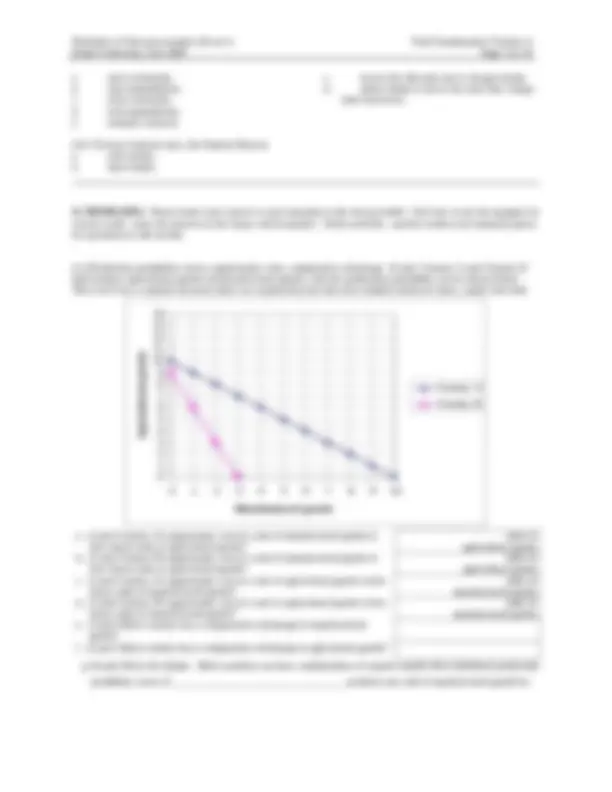
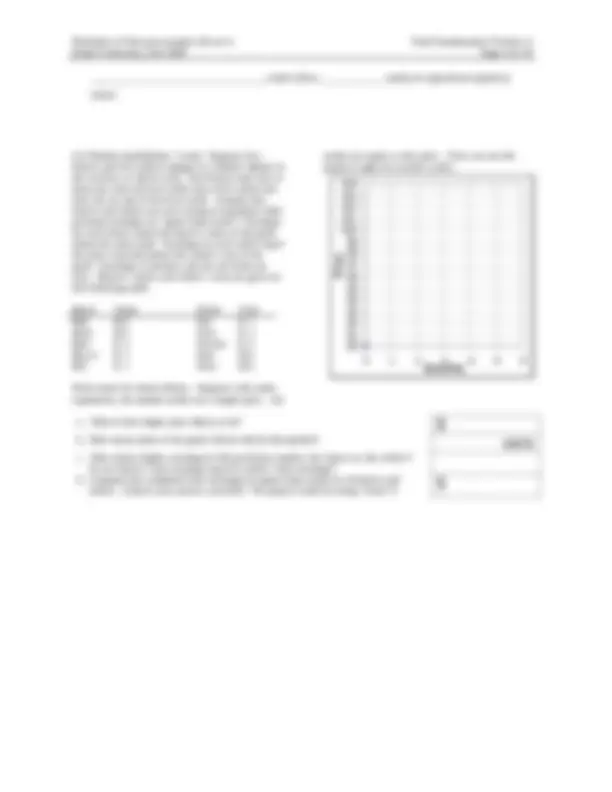
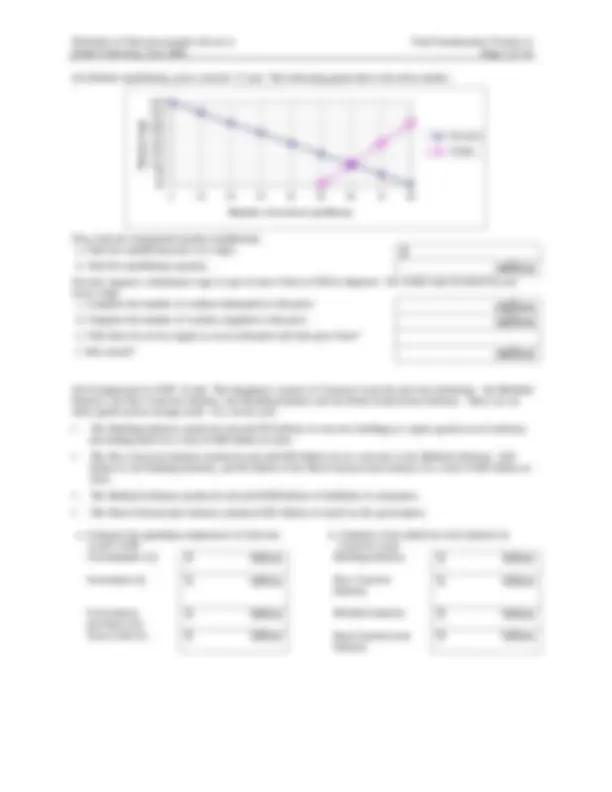
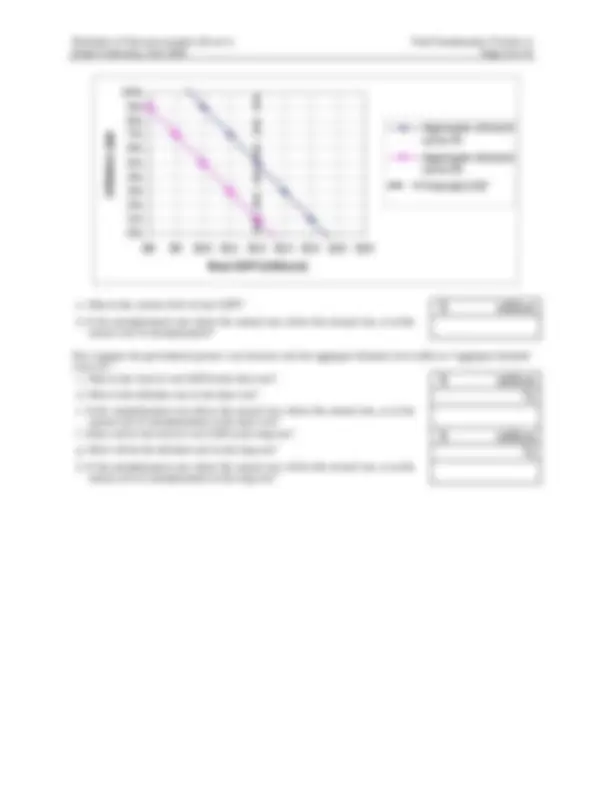
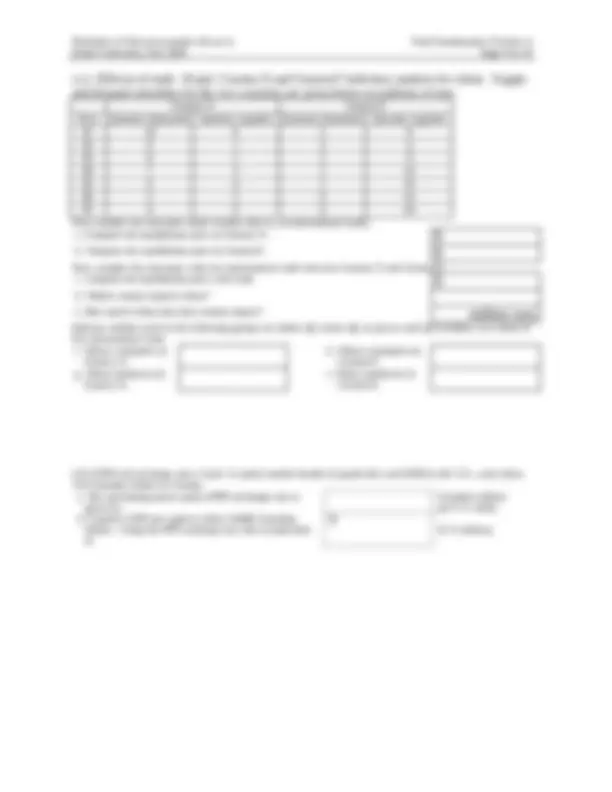



Study with the several resources on Docsity

Earn points by helping other students or get them with a premium plan


Prepare for your exams
Study with the several resources on Docsity

Earn points to download
Earn points by helping other students or get them with a premium plan
Community
Ask the community for help and clear up your study doubts
Discover the best universities in your country according to Docsity users
Free resources
Download our free guides on studying techniques, anxiety management strategies, and thesis advice from Docsity tutors
A final examination for an economics 1 (principles of macroeconomics) course at drake university, fall 2004. The exam covers various topics such as government purchases, gdp calculation, production possibility curves, opportunity costs, comparative advantage, and more. Students are required to answer multiple-choice questions and calculations.
Typology: Exams
1 / 10

This page cannot be seen from the preview
Don't miss anything!







Principles of Macroeconomics (Econ 1) Signature: Drake University, Fall 2004 William M. Boal Printed name:
SECTION: In which section are you enrolled? Please check one box. CRN 3521 12:30-1:45 CRN 3523 2:00-3: INSTRUCTIONS: This exam is closed-book, closed-notes. Simple calculators are permitted, but not graphing calculators or calculators with alphabetical keyboards. Please put away your calculator covers. Please put any backpacks, notebooks, or papers at the front of the hall. Total possible points are 200. Point values for each question are noted in brackets. I. MULTIPLE CHOICE: Circle the one best answer to each question. [2 pts each—44 pts total] (1) In economics, rational behavior means a. ignoring intangible concerns like health and happiness. b. doing the best one can with what one has. c. using mathematics to aid decision-making. d. ignoring one's personal preferences. (2) Carmen can seal 80 campaign envelopes per hour or call 20 voters per hour. Carl can seal 30 envelopes per hour or call 15 voters per hour. Who has a comparative advantage in calling voters? a. Carmen. b. Carl. c. Both people. d. Neither person. (3) In an efficient well-functioning market, a. total gains from trade (or earnings) by buyers will equal total gains by sellers. b. the law of one price will hold. c. every trade will take place at a price halfway between the buyer's value and the seller's cost. d. every potential seller will sell something. (4) Suppose there are no government price controls in a market. If at the current price, the market experiences neither excess demand nor excess supply, the price is likely to a. fall b. rise. c. remain unchanged. d. drop abruptly to zero. (5) In late autumn, the price of snow blowers rises and the quantity purchased also rises. This could be caused by a a. rightward shift in the supply curve. b. leftward shift in the supply curve. c. rightward shift in the demand curve. d. leftward shift in the demand curve. (6) Disinflation means a. employment is falling. b. the inflation rate is falling. c. the price level is falling. d. GDP is falling. (7) Government purchases' share of GDP is a. less than one-quarter of GDP. b. between one-quarter and one-half of GDP. c. between one-half and three-quarters of GDP. d. more than three-quarters of GDP. (8) Social security payments are an example of a. consumption spending. b. government purchases. c. transfer payments. d. investment spending. (9) According to the income approach to calculating GDP, the profits from a U.S. company's operations in Canada a. should be included in both U.S. GDP and in Canada's GDP. b. should not be included in U.S. GDP or Canada's GDP. c. should be included in U.S. GDP but not in Canada's GDP. d. should be included in Canada's GDP but not in U.S. GDP. (10) In the United States, GDP, the population, and the price level are all rising. Therefore, which is growing the fastest?
Drake University, Fall 2004 Page 2 of 10 a. nominal GDP. b. real GDP. c. nominal GDP per capita. d. real GDP per capita. (11) The rate at which you can buy euros with your dollars is called a. the real interest rate. b. net exports. c. the market exchange rate. d. the purchasing-power parity exchange rate. (12) According to the aggregate production function, potential GDP is determined by all of the following except a. the size of the capital stock. b. technology. c. total spending. d. the size of the labor force. (13) Investment spending is a. negatively related to the real interest rate. b. unrelated to the real interest rate. c. positively related to the real interest rate. d. cannot be determined from information given. (14) If a person does not have a job, and last looked for work three weeks ago, that person would be classified by the Bureau of Labor Statistics as a. employed. b. unemployed. c. out of the labor force. d. cannot be determined from information given. (15) "Job rationing" theories of unemployment predict that unemployment could be reduced if a. wages were reduced. b. workers were notified of plant closings in advance. c. wages were increased. d. government helped match unemployed workers with employers. (16) When banks keep reserves on deposit with the Federal Reserve, those funds earn an interest rate a. of zero. b. greater than the market rate. c. equal to the market rate. d. slightly below the market rate. (17) Most economists believe that the long-run relationship between unemployment and inflation is represented by which curve below? (18) When business slacks off, typically the last thing large industrial firms do is a. decrease overtime work. b. lay off workers. c. decrease production. d. cut prices and wages. (19) The unemployment rate is greater than the natural rate (also called the "non-accelerating inflation rate") of unemployment, if GDP is a. greater than potential GDP. b. equal to potential GDP. c. less than potential GDP. d. any of the above. (20) On a graph like that below, most short-run economic fluctuations cause the economy to a. cycle in a clockwise direction. b. cycle in a counterclockwise direction. c. move horizontally left and right. d. move vertically up and down. (21) If the unemployment rate rises above the so- called natural rate of unemployment, the inflation rate
Inflation Unemployment
Inflation Unemployment
Inflation Unemployment
Inflation Unemployment Natural rate Inflation
Drake University, Fall 2004 Page 4 of 10 __________________________________, which offers_____________ unit(s) of agricultural goods in return. (2) [Market equilibrium: 12 pts] Suppose five buyers and five sellers engage in a market similar to the activity we did in class. Each buyer may buy at most one unit and each seller may sell at most one unit, but no one is forced to trade. Assume that buyers and sellers are each trying to maximize their personal earnings (or “gains from trade”). Earnings for each buyer equal the buyer's value of the good minus the price paid. Earnings for each seller equal the price received minus the seller's cost of the good. Earnings of persons who do not trade are zero. Buyers’ values and sellers’ costs are given in the following table. Buyer Value Seller Cost Bob $13 Sue $ 1 Barb $12 Sven $ 2 Bart $ 3 Serena $ 5 Becca $ 2 Sam $ Bill $ 1 Sara $ Prices must be whole dollars. Suppose with some experience, the market settles on a single price. All trades are made at that price. (You can use the graph at right for scratch work.) $
Quantity Price
c. Who enjoys higher earnings in this particular market, the buyers or the sellers? Or are buyers’ total earnings equal to sellers’ total earnings? d. Compute the combined total earnings (or gains from trade) of all buyers and
Drake University, Fall 2004 Page 5 of 10 (3) [Market equilibrium, price controls: 12 pts] The following graph shows the labor market. $ $ $ $ $ $ $ $ $ 0 10 20 30 40 50 60 70 80 Num ber of w orkers (m illions) Hourly wage Demand Supply First, find the unregulated market equilibrium.
Second, suppose a minimum wage (a type of price floor) of $20 is imposed. No worker may be hired for any lower wage.
e. Will there be excess supply or excess demand with this price floor?
(4) [Components of GDP: 16 pts] The imaginary country of Concrete Land has just four industries: the Birdbath Industry, the Raw Concrete Industry, the Building Industry and the Road Construction Industry. There are no other goods and no foreign trade. In a recent year: The Building Industry produced and sold $15 billion of concrete buildings (a capital good) to each industry (including itself) for a total of $60 billion in sales. The Raw Concrete Industry produced and sold $30 billion of raw concrete to the Birdbath Industry, $ billion to the Building Industry, and $5 billion to the Road Construction Industry for a total of $45 billion in sales. The Birdbath Industry produced and sold $100 billion of birdbaths to consumers. The Road Construction Industry produced $25 billion of roads for the government. a. Compute the spending components of Concrete Land’s GDP. b. Compute value added by each industry in Concrete Land.
Industry
Government purchases (G)
Industry
Drake University, Fall 2004 Page 7 of 10 (8) [Interest rate and GDP shares: 10 pts] Suppose the following three equations relate the shares of consumption (C), investment (I), and net exports (X) in total GDP (Y) to the real interest rate (r) in the long run. In these equations, the GDP shares and the interest rate are expressed as percents.
Suppose further that the share of government purchases (G/Y) is fixed at 20 %. Compute the following. [Hint: Check your answer to be sure that the four GDP spending shares sum to 100%.] a. Interest rate (r)
d. Net exports' share of GDP (X/Y):
b. Consumption's share of GDP (C/Y):
c. Investment's share of
(9) [Quantity equation: 2 pts] According to the U.S. Bureau of Economic Analysis, U.S. real GDP grew at an annual rate of 2.9% from 1985 to 1995, while according to the Federal Reserve, the stock of money (M2) grew at an annual rate of 3.9%. Assuming the velocity of money were constant, what should have been the average rate of inflation, according to the quantity equation?
(10) [Consumption function, Keynesian cross, Keynesian multipliers: 16 pts] Suppose the marginal propensity to consume is 0.7 and the marginal propensity to import is 0.1. Assume no other spending components of GDP are affected by aggregate income. a. Compute the slope of the consumption function. b. Compute the slope of the expenditure line in the Keynesian cross diagram. c. Compute the government-purchases multiplier. d. By how much does GDP increase in the short run if government purchases (G) increase by $100 billion?
e. How much of an increase in government purchases is required to raise GDP by $300 billion?
f. Compute the tax-cut multiplier.
h. Suppose taxes and government purchases are to be increased simultaneously by exactly the same amount. How much of such an increase is required to raise GDP by $300 billion?
(11) [Inflation adjustment: 16 pts] Consider the following graph of the macroeconomy, similar to those in Taylor’s textbook. Suppose that the aggregate demand curve is currently at "aggregate demand curve #1" and the inflation rate is currently 5%.
Drake University, Fall 2004 Page 8 of 10
b. Is the unemployment rate above the natural rate, below the natural rate, or at the natural rate of unemployment? Now suppose the government passes a tax increase and the aggregate demand curve shifts to "aggregate demand curve #2."
e. Is the unemployment rate above the natural rate, below the natural rate, or at the natural rate of unemployment in the short run?
h. Is the unemployment rate above the natural rate, below the natural rate, or at the natural rate of unemployment in the long run?
Drake University, Fall 2004 Page 10 of 10 III. Critical thinking: Write a one-paragraph essay answering only one of the following questions. Full credit requires correct economic reasoning, legible writing, good grammar including complete sentences, and accurate spelling. [4 pts] (1) The President has proposed cutting income taxes. Assume this tax cut is permanent, or at least long-term. What will be the likely effect of this tax cut on GDP in the short run? What will be the likely effect of this tax cut on economic growth in the long run? (2) Suppose a country has a very low savings rate. That is, suppose savings as a percent of GDP are very low. Would you expect that country to have a trade surplus or a trade deficit? Why? Which question are you answering? _________. Please write your answer below: [end of exam]